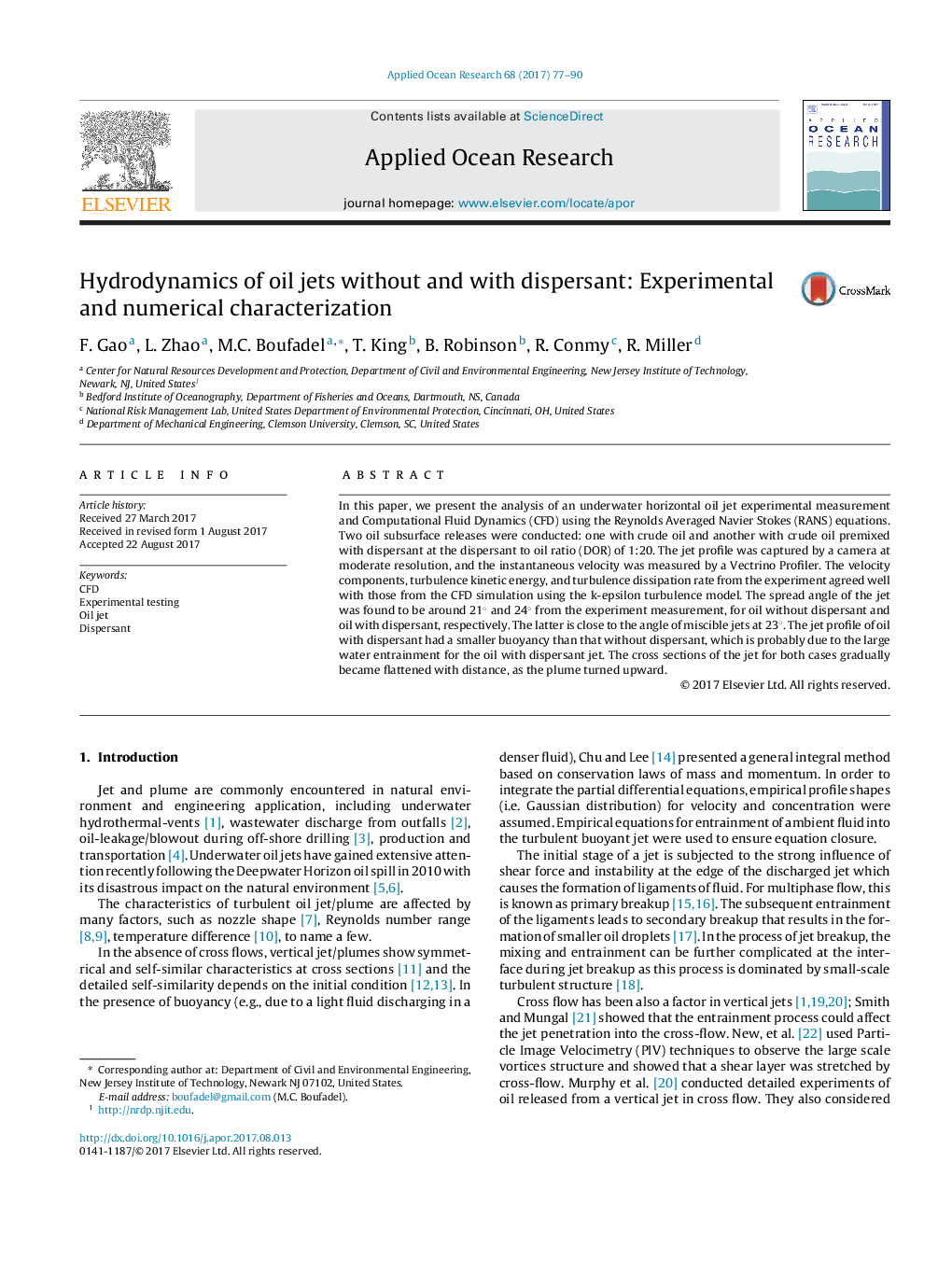| Article ID | Journal | Published Year | Pages | File Type |
|---|---|---|---|---|
| 5473155 | Applied Ocean Research | 2017 | 14 Pages |
Abstract
In this paper, we present the analysis of an underwater horizontal oil jet experimental measurement and Computational Fluid Dynamics (CFD) using the Reynolds Averaged Navier Stokes (RANS) equations. Two oil subsurface releases were conducted: one with crude oil and another with crude oil premixed with dispersant at the dispersant to oil ratio (DOR) of 1:20. The jet profile was captured by a camera at moderate resolution, and the instantaneous velocity was measured by a Vectrino Profiler. The velocity components, turbulence kinetic energy, and turbulence dissipation rate from the experiment agreed well with those from the CFD simulation using the k-epsilon turbulence model. The spread angle of the jet was found to be around 21° and 24° from the experiment measurement, for oil without dispersant and oil with dispersant, respectively. The latter is close to the angle of miscible jets at 23°. The jet profile of oil with dispersant had a smaller buoyancy than that without dispersant, which is probably due to the large water entrainment for the oil with dispersant jet. The cross sections of the jet for both cases gradually became flattened with distance, as the plume turned upward.
Keywords
Related Topics
Physical Sciences and Engineering
Engineering
Ocean Engineering
Authors
F. Gao, L. Zhao, M.C. Boufadel, T. King, B. Robinson, R. Conmy, R. Miller,
